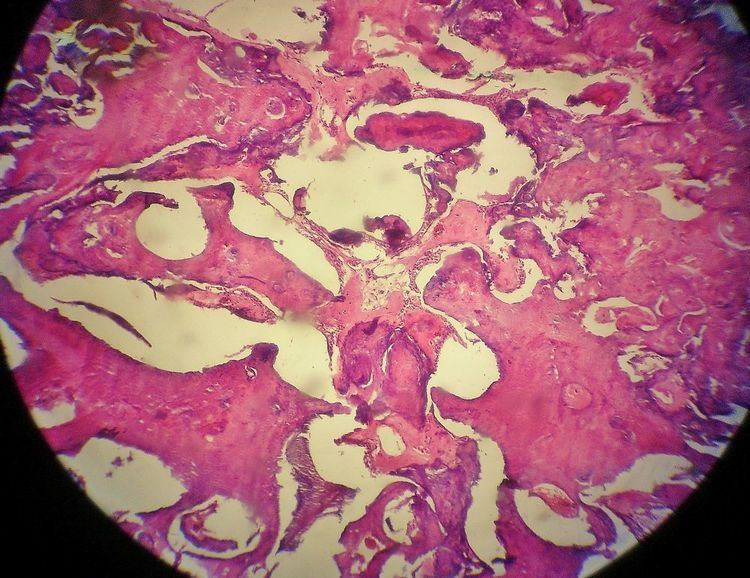ICD-O 9280/0 MeSH D009810 | DiseasesDB 34988 | |
 | ||
An odontoma (also termed odontome) is a benign tumour of odontogenic origin (i.e. linked to tooth development). Specifically, it is a dental hamartoma, meaning that it is composed of normal dental tissue that has grown in an irregular way.
Contents
The average age of people found with an odontoma is 14. The condition is frequently associated with one or more unerupted teeth. Though most cases are found impacted within the jaw there are instances where odontomas have erupted into the oral cavity.
Classification
There are two main types: compound and complex.
In addition to the above forms, the dilated odontoma is an infrequent developmental alteration that appears in any area of the dental arches and can affect deciduous, permanent and supernumerary teeth. Dens invaginatus is a developmental anomaly resulting from invagination of a portion of crown forming within the enamel organ during odontogenesis. The most extreme form of dens invaginatus is known as dilated odontoma.
Epidemiology
Odontomas are thought to be the second most frequent type of odontogenic tumor worldwide (after ameloblastoma), accounting for about 20% of all cases within this relatively uncommon tumor category which shows large geographic variations in incidence.
